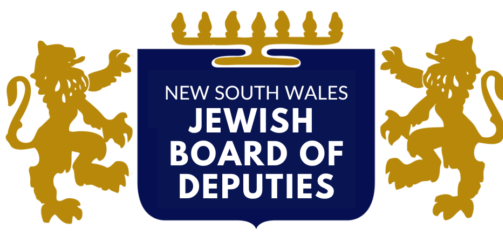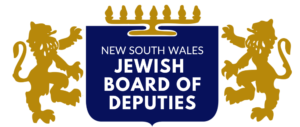NSW Parliament
Legislative Council Hansard
Israel Study Tour – adjournment speech – NSW Parliament’s Legislative Council
The Hon. WALT SECORD (February 26, 2020): – Shadow Treasurer, Shadow Minister for the Arts and Shadow Special Minister of State
As NSW Parliamentary Friends of Israel deputy chair, I rise to report on my participation in the NSW Jewish Board of Deputies-supported January visit to Israel and the West Bank.
While they provided local assistance, all flights and accommodation were paid for by participants.
No matter how many times one has visited the Middle East, as I have, each visit is like a refresher course. These study missions are worthwhile. They are important. They are thoroughly fascinating.
Each visit is an update on the daily security and terror threats that Israel faces and the realities of a very unfriendly neighbourhood. Each visit also reminds us that the Palestinians have a human right to self-determination. As naive as it feels, I still pray for a two-state solution.
I would say that I feel like I know less and less about the region every time I visit. Since 2011 I have visited the United Arab Emirates, Jordan, Egypt, Turkey, Qatar, Oman, the Palestinian Territories, Iraq and Israel.
Since 2012 I have visited Yad Vashem four times and made pilgrimages to Shoah sites around the world, including Auschwitz-Birkenau.
I have also visited Jewish and Islamic sites of the Inquisition in Spain, including Cordoba, Granada and Toledo; Berlin’s Memorial to the Murdered Jews of Europe; and national genocide museums in Armenia and Iraqi Kurdistan.
Furthermore, most recently I visited the two terrorist attack sites on the Israeli Embassy and Jewish community centre in Buenos Aires. I will report back on my visit to Latin American Jewish sites on another occasion.
I believe that if you think you understand Middle East politics, you do not understand Middle East politics.
For the record, the mission provides a range of points of view, including somewhat uncomfortable ones. We heard from political commentators, met Palestinian leaders and the mayor of Efrat, saw the Magen David Adom in full operation, were briefed by water policy experts and Israeli cannabis innovators, saw Hezbollah tunnels in northern Israel, visited the Temple Mount, and laid a wreath at Yad Vashem. In addition, we visited sites in the West Bank, including the so-called martyrs’ memorial in Ramallah and the somewhat bizarre Rawabi development.
In the face of rising anti-Semitism globally I find these trips worthwhile as they remind non-Jews about the need for a Jewish homeland as history and anti-Semitism repeat. To say this is happening is not alarmist—sadly it is not so.
Physical attacks on a person on the way to prayer, swastikas at Bondi Beach and a Nazi flag flying in Wagga Wagga are all symbols of a despicable shift in our community. I note the Executive Council of Australian Jewry [ECAJ] logged 368 anti-Semitic incidents nationally in 2019.
In conclusion, as for this year’s mission, it was again deeply personal.
This was because I was accompanied by my spouse, Julia, who is a member of the Emanuel Synagogue and has close family scattered throughout greater Tel Aviv. I will always remember our Yad Vashem visit and the absolute horror on her face when she happened upon massacre panels of the Ukraine. It turned out to be actual photographs of her mother’s family’s district.
In total, more than 300 of Julia’s grandparents, aunts, uncles and cousins were slaughtered there. Incredibly, the district has had a documented Jewish presence since 1458. Before the Shoah, it had a large synagogue, a yeshiva and a strong Bund tradition. The panel was next to another one quoting Yevgeny Yevtushenko’s poem Babi Yar. I know the poem well, but the connection was far too personal this time. I wept.
Finally, on an uplifting note, I had the privilege of seeing Julia reconnect with her cousin Pavel Abramovich, his wife and their son Professor Felix Abramovich. They were famous Refuseniks. Pavel had been trying to get an exit visa for Israel since 1971. He taught Hebrew and Torah study in Moscow in the 1970s and 1980s.
I did not know fully of their existence until Julia mentioned them at the Bob Hawke memorial service, which we attended together. They were contemporaries of Natan Sharansky and were released in early 1988 due to the efforts of Australian Jewry and activists like former Prime Minister Bob Hawke and former ECAJ president Isi Leibler.
Pavel was part of a famous May 1988 delegation of 15 former Soviet Refuseniks who came to Australia.
They are chronicled in Dr Suzanne Rutland and Sam Lipski’s book Let My People Go. When we met, Pavel pulled out a picture of himself with Naomi and Isi Leibler and Bob and Hazel Hawke in their tiny Moscow apartment. Pavel says he and Mr Leibler still keep in contact.
These personal and tender moments aside, I also got to the Israel Opera, the Shimon Peres Center for Peace and Innovation and the famous Gesher Theatre set up by Russian Jews in 1991. I think it is apt that I end with these mentions. Visits to Israel are as much about celebrating the culture that survives and prospers as they are about remembering the price of that survival.
I look forward to visiting Israel again. My partner, Julia, is already hatching plans that we spend part of our retirement each year in Tel Aviv, Jerusalem or Safed—her favourite city.
As I remarked to my colleague the Hon. Natalie Ward on 18 February at the NSW Jewish Board of Deputies plenum, that retirement would be in about a decade—after serving in a New South Wales Labor Government and after I finish politics.
I thank the House for its consideration.





